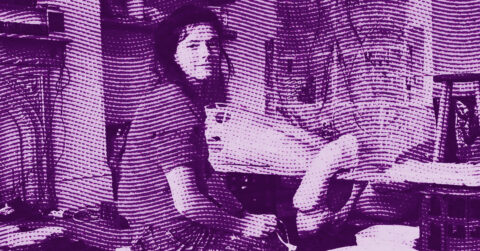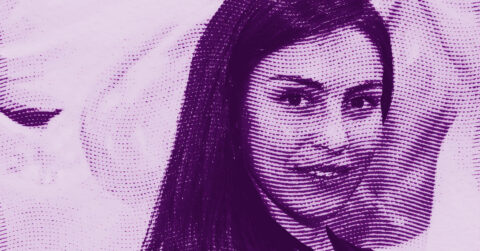Listen to me carefully, you bunch of snobs, I have had enough of these contemporary artists playing the good children. Adriana Varejão, she offers us a visual slap that your reddened cheek will remember for a long time. This Brazilian born in 1964 in Rio de Janeiro does not mince words; she prefers the cracked azulejo tiles from which bloody entrails burst forth.
Varejão is undoubtedly one of the rare artists capable of transforming an ordinary bathroom into a political manifesto. Her polished and cracked surfaces are like the skin of a country that hides its wounds under a veneer of modernity. When she exhibits her “Ruins of Charque,” these architectural structures from which painted entrails overflow, it is the full weight of Brazil’s colonial past that falls upon us. These works are anthropological time bombs, exploding with the violence of four centuries of repressed history.
Varejão’s aesthetic is deliberately ambivalent, oscillating between seduction and repulsion. She traps the viewer in tiled spaces of clinical beauty before gutting them to reveal their chaotic interiors. This method irresistibly evokes Michel Foucault’s thinking on architecture as an instrument of power. As the French philosopher explained: “Space is fundamental in every exercise of power” [1]. In her monochromatic “Saunas” and “Baths,” Varejão deconstructs these disciplinary spaces, these places where bodies are simultaneously controlled and liberated, to expose the failings of a system of representation inherited from the colonizers.
Her obsessive use of the azulejo, this ceramic tile of Portuguese origin, is no coincidence. The azulejo is a cultural testimony that carries traces of multiple influences: Arab, Chinese, European, African. These blue and white tiles tell the story of forced mixing, of creolization before its time. When Varejão appropriates them, distorts them, and makes them bleed, she does not just criticize the colonial heritage; she digests it, transforms it, in a perfect illustration of the cultural anthropophagy theorized by Oswald de Andrade in his famous “Anthropophagic Manifesto” of 1928.
This process of cultural digestion reminds me of Jacques Derrida and his theory of deconstruction. In “Of Grammatology,” Derrida writes: “There is no outside-text” [2], suggesting that nothing exists outside a context, a network of meanings. Varejão’s works operate exactly on this principle: they reveal the successive layers of accumulated meanings in colonial art, tear them apart, then reassemble them according to a new, subversive logic.
Her series “Polvo” may be her most impactful work on this subject. By creating her own skin color palette inspired by the terms Brazilians used to describe their complexion during the 1976 census, she exposes the absurdity of racial classifications while acknowledging their persistent power. From “branquinha” (snow white) to “morenão” (big black), these almost identical self-portraits reveal how our perceptions of race are socially constructed, arbitrary, and yet terribly consequential.
Varejão’s approach is radically different from that of European artists who are content to denounce colonialism from their comfortable positions. She does not claim to be outside the system she criticizes. On the contrary, she deliberately places herself at the center, acknowledging her own involvement in this complex history. As art historian Jochen Volz points out, “she makes use of her own image, but none of these works concern self-portraiture. It seems rather that the artist highlights the fact that she is implicated in this past” [3].
Varejão’s work is deeply erotic, not in a vulgar or gratuitous sense, but in the Baroque tradition that always links the flesh to transcendence. Her eroticism is that of Georges Bataille, for whom “eroticism is the affirmation of life up to and including death” [4]. This tension between life and death, between pleasure and suffering, between beauty and horror is constant in her work. Her “Langues et Incisions” and “Ruines de Charque” expose the flesh as a site of speech and silence, of desire and violence.
Do not think that Varejão is content to reproduce azulejos just to make things pretty. Her practice is infinitely more complex and political. She never makes simple quotations or appropriations, she rather practices what Cuban critic Severo Sarduy called “substitution,” a typically Baroque process that shifts the original meaning to establish a new one [5]. When she inserts gaping wounds into apparently innocent colonial scenes, she not only subverts these images, she reveals their inherent violence.
But perhaps the most fascinating aspect of her work is her ability to play with time. Her cracks, inspired by 11th century Song dynasty ceramics, evoke geological rather than historical time. As anthropologist Claude Lévi-Strauss wrote about New World cities, everything there “seems to be under construction and already in ruins” [6]. Varejão’s works perfectly capture this paradoxical temporality, suspended between a future never reached and a past never really surpassed.
Constantly navigating between these temporalities and geographies, Varejão creates what Martinican writer Édouard Glissant would call a “poetics of Relation,” a rhizomatic thinking opposed to the single root. “The single root is the one that kills around it while the rhizome is the root that extends to meet other roots” [7], Glissant wrote. Varejão’s art is precisely this rhizome, a map woven from different cultures, eras, and latitudes.
There is something deeply cinematic in her approach to the image. Her monochromatic saunas with impossible perspectives evoke the labyrinthine spaces of Stanley Kubrick (think “The Shining,” it is no coincidence that one of her works is entitled “O Iluminado”). But unlike Kubrick, Varejão does not seek to create a feeling of alienation; she rather explores the possibilities of connection in a world fragmented by colonial history.
Her manipulation of geometric patterns, especially in her works inspired by Mexican Talavera, reveals a sophisticated understanding of how forms migrate across cultures. By isolating and enlarging these patterns, she shows that geometric abstraction is not the exclusive domain of white Western thought. From Pre-Columbian art to indigenous body decorations, from Athos Bulcão’s azulejos in Brasília to the sacred motifs of Rubem Valentim, there are many roots and destinations for a “sensitive geometry” [8].
How can one not be amazed by her ability to transform a simple tile into an ideological battlefield? These seemingly neutral surfaces become, under her brush, the site of a fierce struggle between different worldviews. In “Proposta para uma Catequese,” she literally reverses the catechesis script by depicting indigenous people eating Christ instead of passively receiving communion. This gesture of baroque “counter-conquest,” as José Lezama Lima called it, is typical of her approach.
More recently, in her “Talavera” series, presented at Gagosian in New York in 2021, Varejão pushes this approach even further by exploring the Mexican ceramic tradition, itself the product of a mixing between Spanish techniques and indigenous craftsmanship. As curator Luisa Duarte explains, “it is not simply about juxtaposing geometry, ideal, clear, organized, with unpredictable rhizomatic traces close to the vital realm of the body; it is also about speculating on another origin, and, why not?, another destiny, for geometric abstraction” [9].
Varejão’s work constantly reminds us that art is never innocent, never purely aesthetic. It is always intertwined with systems of power, stories of domination and resistance. But rather than locking herself into a sterile accusatory stance, she offers a more complex, more nuanced vision that recognizes past traumas while imagining new possibilities for the future.
That is undoubtedly what makes her work so relevant today, at a time when we see reactionary movements everywhere advocating identity withdrawal and rejection of difference reemerging. Faced with this temptation of the wall, the barrier, the closed border, Varejão’s art reminds us that our identities are always already mixed, always already in relation to the other. In this sense, her work is not only a critique of the colonial past but also a proposition for a decolonial future.
While some desperately cling to notions of cultural purity, of an imagined community based on resemblance, Varejão affirms the fruitfulness of crossing, mixing, and encounter. Her poetics of difference is ultimately one of the most radical political acts; she invites us to imagine other epistemologies, distinct from the anthro/phallo/egocentric and totalizing discourses that have dominated until now.
How can one not be mesmerized by the coherence of a work that, for several decades, has tirelessly explored the same themes while constantly renewing itself? From the early baroque paintings of the 1980s to today’s monumental installations, Varejão has built a singular visual language, immediately recognizable but never predictable.
It is high time that Western art institutions fully recognize the importance of her work, not as an exotic curiosity from the Global South, but as a major contribution to contemporary debates on identity, history, and power. For Adriana Varejão is not only a great Brazilian artist; she is an essential artist to understand our post-colonial world.
- Michel Foucault, “The Eye of Power,” interview with Jean-Pierre Barou and Michelle Perrot, in Bentham, “The Panopticon,” Paris, Belfond, 1977.
- Jacques Derrida, “Of Grammatology,” Paris, Éditions de Minuit, 1967.
- Jochen Volz, cited in “Adriana Varejão: Sutures, fissures, ruins,” exhibition catalog, Pinacoteca de São Paulo, 2022.
- Georges Bataille, “Eroticism,” Paris, Éditions de Minuit, 1957.
- Severo Sarduy, “Written on a Body,” São Paulo, Perspectiva, 1979.
- Claude Lévi-Strauss, “Tristes Tropiques,” Paris, Plon, 1955.
- Édouard Glissant, “Introduction to a Poetics of Diversity”, Paris, Gallimard, 1996.
- Roberto Pontual, “Latin America, Sensitive Geometry”, exhibition catalog, Museu de Arte Moderna, Rio de Janeiro, 1978.
- Luisa Duarte, “Adriana Varejão: For a Poetics of Difference”, Gagosian Quarterly, 2021.
















